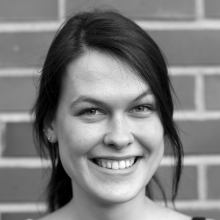Contact
Subject
Simulation of Friction Stir Welding using Smoothed Particle Hydrodynamics
black: published, green: accepted for publication, orange: submitted for publication
- Shishova, E.; Panzer, F.; Werz, M.; Eberhard, P.: Reversible Inter-Particle Bonding in SPH for Improved Simulation of Friction Stir Welding, Journal of Computational Particle Mechanics. [DOI: 10.1007/s40571-022-00510-9]
- Panzer, F.; Shishova, E.; Werz, M.; Weihe, S.; Eberhard, P.; Schmauder, S.: A physically based material model for the simulation of friction stir welding. [DOI: 10.3139/120.111523]
- Shishova, E.; Spreng, F.; Hamann, D.; Eberhard, P.: Tracking of Material Orientation in Updated Lagrangian SPH, Journal of Computational Particle Mechanics. [DOI: 10.1007/s40571-019-00225-4]
- Shishova, E.: Development of an automated simulation environment for Body in White joining techniques, Master's thesis. Aalto University, 2017.
- 27. August 2021: ICTAM, Milano, Italy, "Towards the Simulation of the Friction Stir Welding Process with the Smoothed Particle Hydrodynamics Method"
- 17. March 2021: GAMM, Kassel, "Towards the Simulation of the Friction Stir Welding Process with the Smoothed Particle Hydrodynamics Method"
- 29. October 2019: Particles, Barcelona, Spain, "Simulation of Friction Stir Welding with the Smoothed Particle Hydrodynamics Method"
- 3. June 2019: Statusseminar ITM, Bad Herrenalb, "Wild adventures of particles in the Frictionland"
- 26. November 2018: MPA Materials Mechanics Seminar, Stuttgart, "A microstructure based material model for the simulation of friction stir welding using smoothed particle hydrodynamics"
- 29. May 2018: Statusseminar ITM, Bad Herrenalb, "Simulation of Friction Stir Welding"
- Validation and parameter study of friction models using Smoothed Particle Hydrodynamics for solids, Bachelor Thesis. University of Stuttgart, Institute of Engineering and Computational Mechanics, 2019.
- Teaching Assistant of the lecture Optimization of Mechanical Systems (WT 2021/2022)
- Teaching Assistant of the lecture Optimization of Mechanical Systems (WT 2020/2021)
- Adviser in the practical training Micro-mechanical transducer (WT 2020/2021)
- Teaching Assistant of the lecture Optimization of Mechanical Systems (WT 2019/2020)
- Adviser in the practical training Micro-mechanical transducer (WT 2019/2020)
- Seminar Applied Mechanics II (ST 2019)
- Teaching Assistant of the lecture Optimization of Mechanical Systems (WT 2018/2019)
- Adviser in the practical training Micro-mechanical transducer (WT 2018/2019)
- Seminar Applied Mechanics IV (ST 2018)


